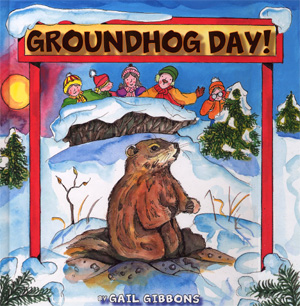
GroundhogDay or Groundhog's Day is aholiday celebrated in New York and Pennsylvania on February 2. In weather lore, if a groundhog, also known as a woodchuck, marmotor ground squirrel, emerges from its burrowon this day and fails to seeits shadow because the weatheris cloudy, winter will soon end. If thegroundhog sees its shadow, it will return into its burrow, andthe winter will continue for 6 more weeks.
In western countries in the Northern Hemisphere the official first day of Spring is about six weeks after Groundhog Day, on March 20 or 21. About 1,000 years ago, before the adoption of the Gregorian calendar when the date of the equinox drifted in the Julian calendar, the spring equinox fell on March 16 instead. This was exactly six weeks after February 2. Assuming that the equinox marked the first day of spring in certain medieval cultures, as it does now in western countries, Groundhog Day occurred exactly six weeks before spring. Therefore, if the groundhog saw his shadow on Groundhog Day there would be six more weeks of winter. If he didn't, there would be 42 more days of winter. In other words, the Groundhog Day tradition may have begun as a bit of folk humor.
Alternatively, the custom could have been a folk embodiment of the confusion created by the collision of two calendrical systems. Some ancient traditions marked the change of season at cross-quarter days such as Imbolc when daylight first makes significant progress against the night. Other traditions held that Spring did not begin until the length of daylight overtook night at the Vernal Equinox. So an arbiter, the groundhog / hedgehog, was incorporated as a yearly custom to settle the two traditions. Sometimes Spring begins at Imbolc, and sometimes Winter lasts 6 more weeks until the equinox.
Friday, January 18, 2008
Groundhog Day
Автор
sarmatt
на
1:19 AM
![]()
Ярлыки: Groundhog Day
Subscribe to:
Post Comments (Atom)
No comments:
Post a Comment